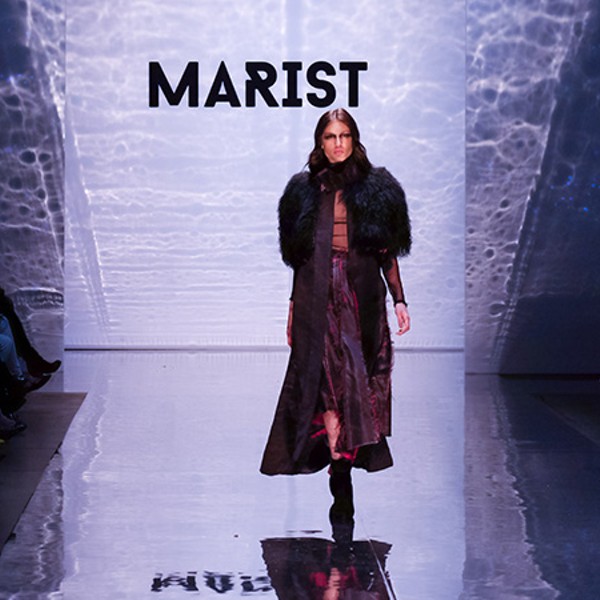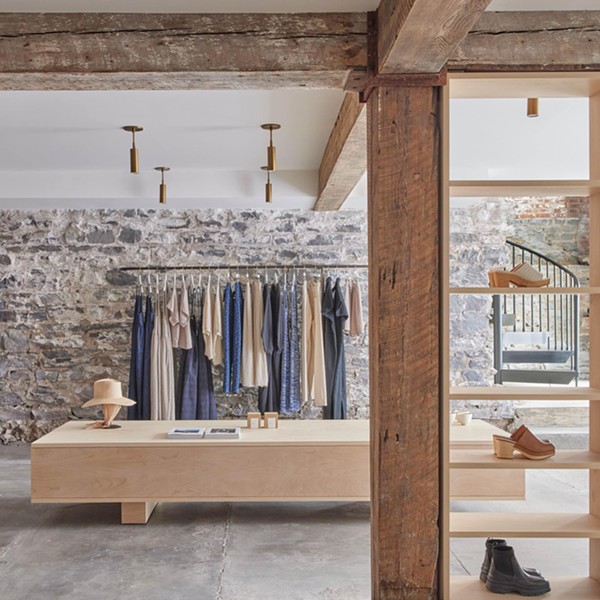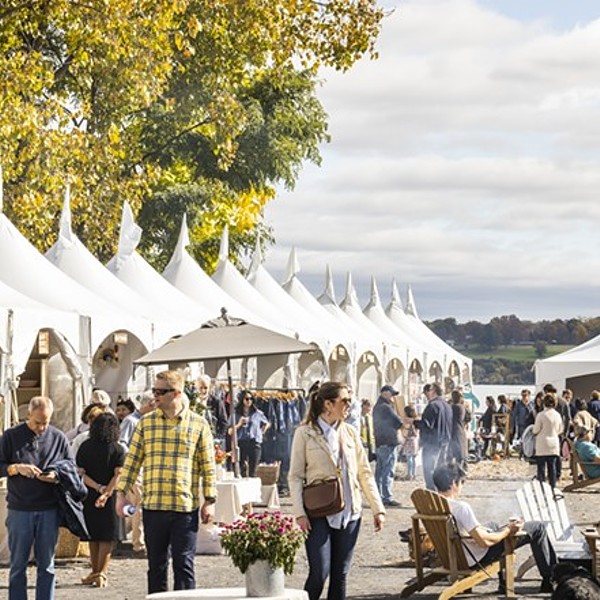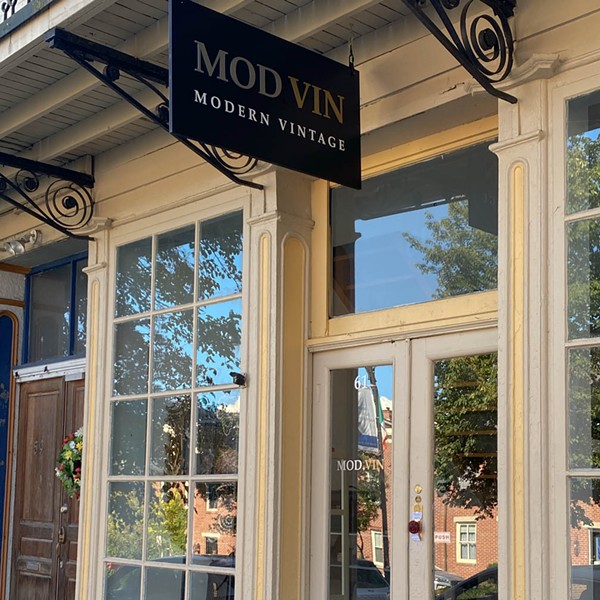“When people think of organic clothing, they automatically think hemp. People who walk into our shop are surprised the clothing is organic,” says Joanna Black, co-owner of Hip-E-Living, a new boutique in Woodstock. She lists sundresses, camisoles, undergarments, and office-appropriate suits and blazers—in a variety of fabrics—as some of the organic items she keeps in stock. “Organic clothing is not just about Birkenstocks and long skirts anymore,” says Black.
All of the home and body products at Hip-E-Living are made of recycled, sustainable, or organic materials and some are so popular they can’t keep them in stock. Their organic cotton baby clothes had to be re-ordered three times in the store’s first month of business. “They come in unique, modern color combinations, such as pink with chocolate brown trim, and they are reasonably priced. Many are hand-dyed with natural dyes, no synthetics—which would defeat the purpose,” says Black.
The purpose is to avert further environmental and health disasters, occurring right now, with the T-shirt on your back. Cotton—that fluffy, ‘natural,’ moisture-wicking fiber—is not all it’s cracked up to be. Twenty-five percent of the world’s insecticides and ten percent of the world’s pesticides are used to grow conventional cotton, states the Organic Trade Association. Included among the up to 8,000 different chemicals used in the production and processing of cotton textiles are some of the most toxic classified by the US Environmental Protection Agency. These chemicals poison the workers who grow and process the plants, and they contaminate our water supplies, soil, and air.
Alternative fibers are plentiful. Soy fiber, made from byproducts of the soybean oil and tofu industries; naturally pest-resistant hemp; and of course organic cotton, which is grown without toxic pesticides. Bamboo is already prized as a renewable resource for its flooring and countertop possibilities. A grass that can grow up to a meter per day, bamboo does not require pesticides, insecticides, or fertilizers, and it doesn’t need to be replanted after harvesting as it continuously sends up new shoots. Spun into fabric, bamboo drapes like silk, is softer than cotton, and has naturally occurring antimicrobial properties.
Clothing designers are catching up with the growing public demand for attractive alternatives, although it takes some searching to find shops that stock the brands.
Hip-E-Living has some of the most up-and-coming organic designers, such as pioneers Stewart + Brown: Look for that firm’s fitted and elegantly draped ruffle shell tank top and French terry camp half-pants. Organic cotton baby clothes by Kate Quinn Organics are hugely popular. And don’t miss the big, chunky sweaters hand knitted from bamboo fiber by Lara Miller which can be worn at least four ways: “Front-ways, back-ways, and upside-down—depending on the look you want,” says Black. Also look for sundresses by Loyale, a company that works with organic cotton, bamboo, and fabrics left over from other textile mills and design houses. “They make blazers and suits that can be worn to the office,” says Black. She emphasizes the choices available in organic fashion—not just the basics, and not just T-shirts.
“At the end of the day, you want to wear something you look fabulous in,” says Geneveive Cruz, head designer of the clothing line Eco-ganik, which spins organic cotton, tencel (made from wood pulp), hemp, and organic wools into elegant kimono-style wrap dresses, hoodie zips, and double-breasted military style jackets with Edwardian influence.
A piece of hard candy rattles around against Cruz’s teeth as she speaks on the phone from her Los Angeles office. “It’s cool to be organic. It’s not just hug a tree and ‘Kumbaya’ anymore,” she says. Popular culture apparently agrees, and the Eco-ganik line has been featured in the pages of In Style, Lucky, and Glamour. Look for Eco-ganik’s items at Bingo in Woodstock.
At Ekologic, a design firm based in Troy, designer and president Kathleen Tesnakis takes another stance in the movement: Ekologic items are made from recycled fibers. “If by ‘organic’ you mean ‘sustainable,’ then, absolutely, we are organic. By not using chemicals, our footprint is quite small,” says Tesnakis. She quotes a study that found reusing garments in the manufacturing process cuts energy consumption by more than 97 percent. To date, Ekologic estimates it has reclaimed over seven tons of used garments.
Each Ekologic creation is hand cut and hand stitched from choice bits of fabric sorted from hundreds of pounds of recycled cashmere and cotton. The current women’s line, the Bubble series, includes mini skirts and tank and tube tops of ruched recycled cotton. For men, there are T-shirts—each one made from several—which look very much like geometric art pieces.
Tesnakis came to fashion by way of textile design. “One day, I fell in love with creating things out of old sweaters. I started exploring with felting and dyeing and it was always exciting. I never got bored,” she says. She started an accessories line and loved the feeling of recycling, which she describes as empowering her creativity and individuality. She will not reveal her sources, but says all of her materials come from within a radius of a couple of hundred miles. “That’s another aspect to what I do. All the money to buy materials stays in the community,” she says.
Ekologic has been featured in the Village Voice, the New York Times, and Jane, among other publications, and its one-of-a-kind pieces are in demand by boutiques as far away as San Francisco, Amsterdam, and Japan. Regionally, check out Kosa in Hudson, Fire Opal in Jamaica Plain, Massachusetts, and the Departure Museum Shop at the Albany Airport for Ekologic clothing.
For a more casual look, try the organic cotton line by Eileen Fisher—available at the Vlada Boutique in Stockbridge. Vlada also stocks linen items by the upstate New York firm FLAX. Linen is harvested from the flax plant and is the strongest of the vegetable fibers—two to three times stronger than cotton—and, like hemp, it’s naturally insect-resistant. FLAX avoids plastic buttons and instead uses Corozo buttons, made from the nuts of a South American palm tree and harvested by indigenous peoples. Linen is lint-free and softens as it is worn and washed, so it actually improves with age. “You pick pieces you will have in your wardrobe for years and years, because they don’t wear out,” says Vlada’s manager, Jessi Nolet.
Considering it takes roughly one-third of a pound of chemical pesticides and fertilizers to grow enough cotton for just one T-shirt, the standard American uniform is a powerful place to start your wardrobe update. Look for organic T’s by Earth Creations, which feature graphic prints made from natural clay dyes and bright, low-impact dyes. Earth Creations items can be found in regional shops including Omega Bookstore in Rhinebeck and White Rice in Hudson.
Get hip. Go organic—one tank top at a time.
Resources:
Hip-E-Living
65 Tinker St., Woodstock; (845) 679-2158
E Ko Logic
444 River St., Troy; (518) 274-0813; www.ekologic.com
Vlada Boutique
17 Elm St., Stockbridge; (413) 298-3656; www.vladaboutique.com
Omega Bookstore
150 Lake Dr., Rhinebeck; (845) 266-4222; www.eomega.org
White Rice
531 Warren St., Hudson; (518) 697-3500; www.white-rice.com
Departure Museum Shop at the Albany Airport
Albany International Airport, 737 Albany-Shaker Rd., Albany; (518) 242-2540
KOSA
23 Warren St., Hudson; (518) 828-6620

















